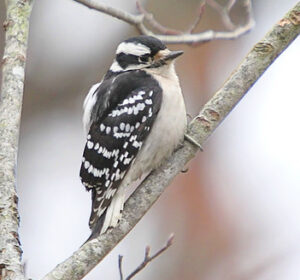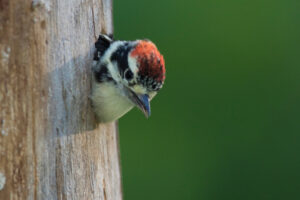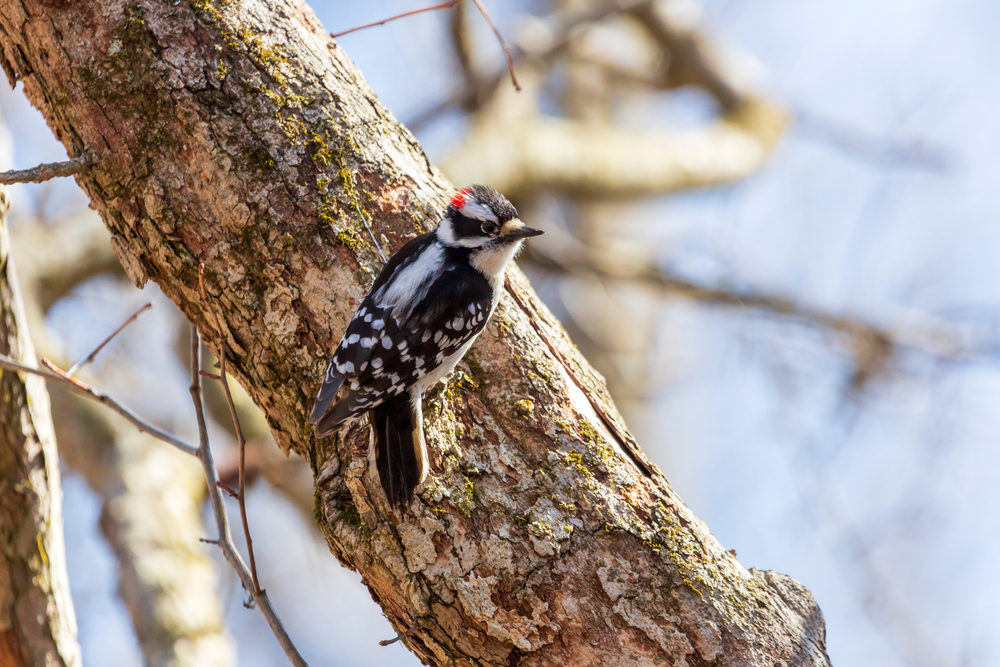Downy Woodpecker, Dryobates pubescens
Bill Rowe
Wherever there are trees, there are woodpeckers, pretty much the world over. And in every region, there will be one or more very small ones—like the Downy Woodpecker, here in North America. In the western states, a couple of species are just slightly larger, but here in the east it’s no contest: all the others have at least a two-inch advantage. Besides being small, the Downy has proportionately the shortest bill, just a “little bark-sticker” in the words of Roger Tory Peterson, a master of catchy descriptions. This little bill enables it to focus on small insects and their eggs and larvae, especially those that live in tunnels under the bark; and it has other typical woodpecker adaptations such as zygodactyl feet (two toes forward and two back, for a good grip on the bark) that enable it to make a successful living from exploring one tree after another. The Downy is a year-round resident of most of the United States and southern Canada; here in the eastern deciduous forest region, it is very widespread and rather uniformly distributed. The territories it maintains are expectably small, especially compared to those of its look-alike larger cousin the Hairy Woodpecker, so that many more Downies than Hairies are typically found in a day of birding the woods.
IDENTIFICATION: The Downy’s small size will usually permit you to identify it quickly, even flying overhead. When perched, its black-and-white plumage pattern, including the white streak down the center of the back, is unique except for the Hairy Woodpecker, which has nearly identical plumage. Hairies are larger, however, with much longer, stouter bills; if you want some extra confirmation, check the outer tail feathers, which are pure white in a Hairy but have a few small black spots or bars in a Downy. And, finally, their calls are diagnostic, the Downy giving a rather quiet “pik” or a downslurred whinnying series of notes, unlike the Hairy’s louder, sharper “peek!” or shrill rattle. Male Downies have a small red patch at the back of the head (see banner photo), missing in females (see below, left), while juvenile males have a broader patch of red that extends forward on the head (see below, right).
ST. LOUIS STATUS: A common permanent resident of forests and woodlots large and small, also of well-treed suburbs and city parks. Very frequent at feeders, taking both seed and suet.
Learn more and listen to the calls of Downy Woodpeckers here.


Female; no red
Photo Credit: Al Smith
Juvenile male at nest hole




